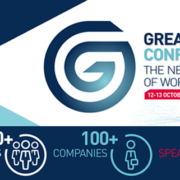How Come Stress Still Exists in Your Organisation?
Organisations around the world are experiencing unprecedented levels of burnout, which is creating a significant — and under-recognised — cost to organisations in the form of quiet quitting, reduced innovation, and even spiralling healthcare costs. Many people are quick to point to an increase in overall workload as the culprit. But our research shows that the work itself has not increased so much as the collaborative demands of the work.
By that, we mean the volume and frequency of the collaborations that people have to engage in to complete the work — what we call the collaborative footprint — have risen over the past decade and a half, bringing exponential opportunities for stress. This comes through the increased potential for misunderstanding, misalignment, and imbalances of workload and capacity, among other things. All of this combines to create a battering of everyday stresses.
One form of this stress is the one we call “microstress” — small moments of stress from interactions with colleagues that feel routine but whose cumulative toll is enormous. Our research into high performers has made clear the destructive impact of unchecked microstress, both on individuals and on teams. At the team level, this form of stress propagates through networks and relationships.
It may seem challenging to find ways to reduce stress on teams that are overloaded with deliverables, but leaders have more tools at their disposal than they may realise. Instead of relying only on coaching on individual coping strategies, leaders can look for systemic improvement in the collective working environment. We have identified four overlooked collective strategies that leaders can implement for reducing microstress. Here are the four key questions you need to ask.
Can we reduce structural complexity?
For decades organisations have been building organisational complexity — not only in expanding spans and layers in traditional hierarchical structures (expanding the number of direct reports to reduce layers between the front line and the C-suite), but also in moving to matrixed, networked, or other more agile ways of working. While new these structures can be effective at increasing flexibility, they have also unintentionally introduced complexity by multiplying the required number of interactions per employee. We routinely see organisations adopting advice to move to structures with consistent spans of control (the number of people one is responsible for managing) of eight people. But such efforts to improve efficiency don’t consider the collaborations required to do the work. The collaborative footprint of work — which has risen 50% or more in the past 15 years, according to Rob Cross’s research — is creating exponential opportunities for small stresses to run rampant in any organisation. Unchecked, such complexity, can easily accumulate, triggering a proliferation of microstresses.
De-layering might seem to be a solution, but in embracing it many organisations have moved to spans of control that really are not feasible given the collaborative intensity of the work. (We’ve even seen some organisations scaling up to spans of control of 12 or more.) Such flat hierarchy can create stress for employees balancing competing objectives of multiple leaders to whom an employee might report, formally or informally.
Removing layers, while appealing on cost analyses and decision-making flows, also often introduces other less visible inefficiencies around work. Many teams are underperforming today due to priority overload where too many uncoordinated asks are coming into the teams from disconnected stakeholders and failures of coordination and prioritization at high levels in the organisation.
One way to fix that is to have explicit processes to remove excessive complexity. It may not be possible to rewind all of these efforts at de-layering organisations, but there are a few simple practices you can employ to root out the potential for unnecessary stress from structural complexity. Most companies have many ways of introducing new complexity, but no systematic continuous effort to remove it. Netflix is one of a handful of firms known for prioritizing identifying and removing unnecessary complexity. As their company policy states, “We work hard to … keep our business as simple as possible … you don’t need policies for everything.” If you must introduce new teams or procedures, consider making them temporary. Create them with an explicit sunset clause, such that it is dissolved when no longer useful, avoiding the gradual ratcheting of complexity over time.
Companies can also control complexity by continually simplifying the product portfolio, which is often a key driver of complexity. Trader Joe’s has a such a policy for controlling the number of SKUs to maintain the number at less than 10% of the industry average. Similarly, LEGO controls the number of colours and brick types in its products, to control manufacturing and logistical complexity.
Above all, don’t just think about on paper efficiency, think about the collaborative asks being placed on human beings who execute these tasks day in, day out. When we have asked top teams in offsites who in the room wants another email, meeting, or phone call in their lives, we have yet to see a single hand shoot up. The more complex, the more matrixed, the more required communication and connection between employees, the more ad hoc the more microstresses are going to be impeding the effectiveness of work.
Does our workflow make sense?
Organisations have had an unrelenting push into agile, network-centric structures executing through teams that are formed and disbanded at increasingly rapid pace. These efforts are providing speed, but taken to an extreme, they are starting to sacrifice the benefits of scale and efficiency that came from the process revolution. Forming and reforming project teams requires increasing coordination, often relying on the heroics of individual employees to get work done. But that is not a sustainable strategy — and triggers endless opportunities for burnout. “It’s better to rely on a process than just people,” Don Allan, CEO of Stanley Black & Decker observed of one of the key HR lessons of the pandemic, “so you do not create unnecessary stress and even burnout for your organisation.”
The proliferation of technologies in the workplace promises to streamline work and communication, but instead can often became a source of additional complexity, required work and stress. Often, we find organisations using between six and nine means of collaborating to get work done — meetings (virtual and face-to-face), email, instant messaging (such as Slack), team collaborative spaces, phone calls, texting, etc. Inefficiencies invariably creep in as people use these modalities differently — for example, who doesn’t have a colleague who loves to write elaborate emails, hiding what they want in the 10th paragraph! Or at the other extreme, some people use one modality (e.g., IM) to solve problems quickly, but lack of transparency into the interaction creates misalignment with other teammates who have no idea a decision was made over IM.
One way to limit this stress is to agree on collaborative norms. For example, a team might agree to only use bullets on email. And if a longer explanation is required or a disagreement seems to be brewing, the team agrees to meet face to face. We find a simple exercise of asking teams to agree to three positive norms across all modes of collaboration that they want to sustain and three negatives they want to stop (e.g., emailing at night, hitting reply to all on mundane responses, etc.) can generate 8–12% time savings across teams, allowing them more time to focus on the actual work. Technology itself is not necessarily a bad thing, but the culture that springs up around using that technology is where microstress creeps in.
Teams can also limit the set of tools they’re using and bake them into the work in a way which reduces human transaction costs. Focus on maximizing technology that helps eliminate or reduce the costs of mundane tasks, e.g. setting up workflows on Slack or recurring meetings to ensure appropriate check ins don’t slip through the cracks because they’re relying on a team member to set up and coordinate. Encourage the team to invest time in learning the tools and share their productivity tips and tricks. And avoid new tools or multiple tools that inadvertently becoming new sources of work or complexity e.g. through cumbersome sign on procedures or lack of mutual compatibility. Too often teams aren’t consulted about which tools will actually help their productivity.
Has the profusion of teams spiked employees’ microstress?
One of the unintended consequences of organisations relying on teams that are assembled for projects is that teams have less time to build the kind of trust that is essential for efficient collaboration. And that happens repeatedly because many organisations require employees to contribute to five or six team efforts (in addition to their primary team) and have often let these groups grow too large, with the average team size hovering around 15.
To avoid team growth from causing trouble, don’t let “flexible” turn into inefficient. Some organisations trying to attract and retain top talent during the great resignation (and quiet quitting) have implemented talent marketplaces which allow employees to locate projects they would like to work on or roles they want to fill as they chart their own career progression. Though well-intended as a talent retention tool, these shifts create inefficiencies in the network that most organisations do not account for. These programs are well-received by the employees but induce microstresses on both the team the employee is leaving and the one they are ported into, as they suddenly have to redirect and shape key working relationships with new people. One life sciences organisation we worked with modelled the relational cost (the “switching costs” on work relationships and productivity of continually rotating teams) and determined that it didn’t make sense for anyone to switch roles or teams in less than fifteen months because both the team and the rotating employee would fail to optimize the opportunity.
Companies must also ensure that their return-to-office plan doesn’t create hidden stress. About 80% of companies are opting to require employees to be in the office three days a week, according to research from i4cp (the Institute for Corporate Productivity). To soften the blow and ensure flexibility, about half of those companies are allowing employees to pick the days they want to return.
Unfortunately, this well-intentioned effort has also created a new set of microstresses when the people who an organisation needs to work together pick different days. Leaving this up to chance will not only hurt employee morale, but innovation and productivity. To prevent this, some organisations are using a technique called organisational network analysis (a methodology that maps employees’ working relationships) to specify specific groups of employees that need to be in the office at a given interval. Such an analysis can help leaders answer three critical questions in a return-to-office strategy:
- Who should be brought back together and in what cadence of in-person and virtual interactions?
- What work should be prioritised in the now scarcer in-person time?
- How do leaders manage the transition to a hybrid model with the least resistance?
- This method also helps motivate employees to resume some in-person interactions by showing them how hybrid work can improve their own effectiveness.
- Have we built a sense of purpose in our employees’ everyday interactions?
Organisations have become adept at working efficiently with the help of technologies — what can’t be swiftly taken care of on a Zoom call these days? But when work revolves around technology use, it can become transactional, missing the opportunity to make sure that employees understand how their work contributes to that purpose.
To avoid that problem, smart companies create opportunities to discuss purpose and how each group contributes to it. It is your role as a leader to shape and communicate the goal that you’re all working towards. Don’t let that get lost in the sea of microstress. With a clear understanding of how they are contributing to purpose, employees can more easily prioritise their work. Discuss what work is essential (and what is not) in contributing to purpose and use this to help your team prioritise and redesign work accordingly.
While many organisations focus on rallying employees around a collective corporate purpose, our research also suggests that purpose can be found in positive everyday interactions with colleagues, too. For example, employees can find meaningful purpose in “co-creating” (involving the aha moments that emerge as people build on each other’s ideas) which helps builds a sense of We are in this together. Small moments of working on something together create an authentic connection, a kind of antidote to the flood of microstresses that otherwise fill employees’ days.
Finally, as leaders, don’t underestimate the impact of your own microstress, both on you and your team. Look for interactions in which you are unintentionally creating microstress for your team — for example being slightly unpredictable in your expectations, failing to communicate deliverables clearly, or continually micromanaging their work. The microstress we create for others inevitably boomerangs back on us. If you recognize where you are the source of unnecessary microstress and try to course-correct, you will not only help reduce stress on your team, but you’ll be also reducing stress on yourself, as well.
CURIOUS ABOUT THE IMPACT OF OUR UNBIASED HR SOLUTIONS?
Take the first step towards transforming your remote work culture by requesting a free demo assessment from Great People Inside.
Our team of experts will guide you through the assessment process, showcasing the effectiveness and value of our tailored solutions for your organization.
During the demo, you will have the opportunity to explore the comprehensive features and functionalities of our psychometric assessments, experiencing firsthand how they can empower your HR strategies and drive positive outcomes. From personality assessments to cognitive abilities and team dynamics evaluations, our assessments provide valuable insights to enhance talent management and foster inclusive remote work environments.
Don’t miss out on this opportunity to test the power of unbiased HR solutions. Request your free demo assessment from Great People Inside today and embark on a journey of fair and effective talent management in the remote work era.
Together, we can unlock the true potential of your remote teams and achieve remarkable success. Request a Free Demo Assessment.

Sources:
https://www.forbes.com/sites/tracybrower/2022/07/24/burnout-is-a-worldwide-problem-5-ways-work-must-change/
https://www.cnbc.com/2021/10/13/work-burnout-rises-despite-company-investments-in-mental-health.html
https://www.mckinsey.com/mhi/our-insights/addressing-employee-burnout-are-you-solving-the-right-problem











